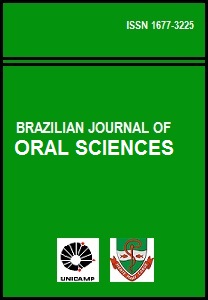Abstract
Aim: To evaluate the prevalence of gingival recession (GR), its classification according to Miller’s classification, and its relationship with gender, age, income and level of education, in the population of the city of Divinópolis, MG, Brazil. Methods: Two questionnaires were distributed to the local dentists. One of them was directed to the patients and had questions referring to gender, age and socioeconomic conditions; the other was directed to dentists and had questions about the type of GR found in each patient. Results: 245 patients were included in the study. GR prevalence was higher in women. GR prevalence increased with age and seemed to stabilize after the age of 30. There was no relationship between GR and patient’s socioeconomic status. A higher GR prevalence was found in premolars with no statistically significant difference among them. There is a higher prevalence of Miller’s Class I GR. Conclusions: As the prevalence of GR increases with age, a frequency of 81.40% of GR was obtained. No correlation was found between socioeconomic level and GR. In addition, there was no significant difference between genders on GR prevalence. A higher Miller class I (p=0.000) prevalence was observed. There was no significant difference between mandibular and maxillary molars. However, the mandibular premolars were the most affected and there was a higher GR prevalence in maxillary teeth than in mandibular teeth.The Brazilian Journal of Oral Sciences uses the Creative Commons license (CC), thus preserving the integrity of the articles in an open access environment.
Downloads
Download data is not yet available.

